Discover Big Closets Small Planet
Big Closets Small Planet

Big Closets Small Planet
Author: Michael Schragger
Subscribed: 107Played: 2,649Subscribe
Share
© Copyright 2018-2020 Michael Schragger
Description
Fashion and apparel. It touches nearly everyone. When its at its best, fashion and apparel is not only functional, but also fun, expressive, sexy, and for some businesses, very profitable. But when it is at its worst, fashion and apparel is superficial, exploitative, polluting and extremely wasteful - in other words the essence of unsustainable consumption. And while it is argued that the industry's rapid growth has created employment opportunities for more than 300 million people worldwide, especially for women in poorer countries and those in extreme poverty, many garment workers still struggle to earn enough to pay to meet even their most basic needs. More alarming is the fact that as the industry grows - by 2030 more than 8 billion people will live on the planet, and nearly 5 billion of these will be part of the global middle class - its negative environmental impacts may become unmanageable, potentially undermining its social benefits and contributing to ecosystem degradation on local, regional and global scales.
Who would have thought garments could be so destructive?
The fashion industry must change now, but will we manage in time? Join Mike Schragger, founder of the Sustainable Fashion Academy, as he explores the challenges, incentives and disincentives and emerging solutions needed to rapidly transform the industry. Listen in as he talks with the business leaders, activists, researchers, innovators and entrepreneurs, investors, legislators, consumers and citizens - who are racing against the clock to find solutions that will transform the industry, thus ensuring it truly operates for the benefit of people and the planet.
www.sustainablefashionacademy.org/podcasts/big-closets-small-planet
Who would have thought garments could be so destructive?
The fashion industry must change now, but will we manage in time? Join Mike Schragger, founder of the Sustainable Fashion Academy, as he explores the challenges, incentives and disincentives and emerging solutions needed to rapidly transform the industry. Listen in as he talks with the business leaders, activists, researchers, innovators and entrepreneurs, investors, legislators, consumers and citizens - who are racing against the clock to find solutions that will transform the industry, thus ensuring it truly operates for the benefit of people and the planet.
www.sustainablefashionacademy.org/podcasts/big-closets-small-planet
57 Episodes
Reverse
A few years ago Professor Jason Hickel was invited to speak during an annual Textile Exchange conference. Why was that invitation noteworthy? Because Jason is an advocate for degrowth in fashion. Fast forward to 2024 and Textile Exchange released the report Reimagining Growth Landscape Analysis. Perhaps Jason's intervention struck a chord? In this conversation, Michael speaks with Beth Jensen from Textile Exchange and Rachel Arthur, the report's lead author, to explore the reasoning behind and the conclusions drawn in the report. In short, the report concludes that the industry's current trajectory is incompatible with achieving key climate, nature, and human rights goals, because impacts will only increase while growth remains a business imperative. Michael, Beth and Rachel explore what an alternative approach could look like, including the challenging concepts and terminology needed to frame the discussion, whether apparel business leaders are or can ever be receptive to this analysis, and what possible pathways they see for moving this agenda forward. "Focusing on business as usual is not really an option. If we don't address this, we won't meet our sustainability goals or the Paris Agreement." "Today's CEOs have a fiduciary duty to report growth—that's the reality we're working within. It's why this conversation is both sensitive and necessary." "Green growth hasn't yet been proven possible — not in the short timeframe we have, and not on a continuous basis." For more information about this podcast and our guest experts, or to listen to other Climate Action Week 2025 podcast conversations, please visit: https://sustainablefashionacademy.org/stica/climate-action-week-2025/
Ken Pucker, former COO at Timberland and now Professor of Practice at Tufts University, sustainable industry analyst, opinion columnist and critic, views himself as a completely independent voice when it comes to issues concerning fashion and sustainability. During last year's Climate Action Week, Michael and Ken discussed a number of topics, including his views regarding the rise and negative impacts of instant fashion and why voluntary sustainability initiatives do not work and thus why we need smart legislation. We invited Ken back to comment on what has happened in the past year regarding instant fashion, including the continuing saga involving Shein's IPO and its newly approved science-based target, the status of the New York and California Fashion Acts, how congestion pricing could be a model climate action in the apparel industry, circular fantasies and myth busting, and whether he thinks his work is having an impact. Ken is always very insightful and thought provoking. "Shein's emissions are now the biggest in the industry. They've grown 3x in the last three years." "Congestion pricing worked in New York and London. Why not apply similar thinking to fashion?" "I recognise that I am in a special place, I am gifted the opportunity to be independent and most people cannot be. So I don't take that responsibility or gift lightly." For more information about this podcast and our guest experts, or to listen to other Climate Action Week 2025 podcast conversations, please visit: https://sustainablefashionacademy.org/stica/climate-action-week-2025/
The idea that the fashion and apparel industry can continue to grow by employing a green-growth model has been questioned by many leading thinkers. It is argued that for the industry to reduce its emissions at the pace and scale required and to operate within the planetary boundaries, overproduction and overconsumption must stop. This is especially challenging because, as critics explain, the dominant economic business model relies on growth, and business growth often neutralizes gains in emission reductions. During Climate Action Week 2024, Katia Dayan Vladimirova, Chief Executive Officer at the Post Growth Fashion Agency, and Luca Boniolo from ECOS, presented their argument on why a sufficiency approach is the best way forward. In this conversation they go a step further explaining the concrete steps that the EU and the industry should take to implement this approach. "The logic of sufficiency forces us to ask: how much is enough?" "We propose limiting the number of fashion collections per year and introducing binding targets on production volumes." For more information about this podcast and our guest experts, or to listen to other Climate Action Week 2025 podcast conversations, please visit: https://sustainablefashionacademy.org/stica/climate-action-week-2025/
The Kappahl Group is a signatory in STICA's Company Climate Action Program. That is why we invited Elisabeth Peregi, CEO of the Kappahl Group, for a conversation about how a CEO from a midsized, privately owned apparel brand understands the challenges and opportunities with climate action. Michael and Elisabeth discuss if it's possible to achieve financial growth and reduce emissions simultaneously, if legislation and financial incentives are necessary to enable the Kappahl Group and the industry overall to achieve their climate targets, how long term relationships and authentic engagement are the keys to ensuring success in decarbonization, and even the role of business in society. "We've decided that the growth we want to achieve must be both profitable and sustainable at the same time." "Reducing or transforming to renewable energy is good — but it's even better if you reduce the energy needed in the first place." "The transformation will not be done only on a voluntary basis… we need legislation and supervision to help businesses change." For more information about this podcast and our guest expert, or to listen to other podcast conversations, please visit: https://sustainablefashionacademy.org/stica/climate-action-week-2025/
During STICA's 2024 Climate Action Week, Maxine Bédat and her colleagues from the NRDC and the New York State Assembly updated us on the arguments for and status of the New York Fashion Act. Since then more has happened. Similar bills have been introduced in California and Massachusetts. In this conversation, Michael asks Maxine to provide an update on the status of the bills, including how they address climate action specifically, if and how the bills align or differ, why she thinks they will be effective, and why there are no major industry organizations and only a few global brands officially supporting these bills. "This is not counter to industry. This is a pro-industry bill. It sets the basic guardrails so the industry can thrive in the future." "What doesn't make sense to me is that the industry created these standards—and now they're opposing them when asked to follow through." "If you're not in favor of this bill and not actively promoting it, that is the position of the industry today. That's a shocking and sad state of affairs." For more information about this podcast and our guest expert, or to listen to other Climate Action Week 2025 podcast conversations, please visit: https://sustainablefashionacademy.org/stica/climate-action-week-2025/
According to a recent report by the European Environment Agency, the greenhouse gas emissions from textile consumption in the EU was 355kg CO2e per person (based on 2022 data). So how does the EU Commission, which is responsible for developing and implementing the EU Strategy for Sustainable and Circular Textiles, think about climate action and textiles? Michael invited Matjaž Malgaj, the Coordinator of the cross-Directorate General team (DG ENV, DG GROW, and DG ENER) that works on making sustainable products the norm in the EU, and Head of Unit for Sustainable Products in DG ENV, to weigh in. Michael asked Matjaž about the EU Commission's view on climate action in the context of apparel and textiles, whether the commission wants the industry to align itself with science-based targets and whether the EU apparel industry and its citizens should reduce its emissions inline with the 1.5C pathway. Michael and Matjaž discuss whether the current and coming legislation will enable decarbonisation at the pace and scale science says is required, which particular pieces of legislation will be most effective and how the Commission thinks about addressing the fact that a significant amount of the industry's emissions are created in countries outside of the EU. Michael pushed the conversation even further by asking Matjaž to weigh in on the tension between economic growth and competitiveness and environmental targets, ultra-fast fashion and overconsumption, financial rewards and penalties and what the EU can and cannot do. If you want to know how the EU Commission currently thinks about climate action in the context of the apparel industry, then you should definitely listen to this! "Everything we do should be seen in the context of becoming a decarbonised net society by 2050." "Just the regulations on their own will not do everything… we know there is an issue of overconsumption." "We heard time and time again that we should be ambitious, but we also have to be sure that we're designing something that can actually be rolled out in real life." For more information about this podcast and our guest expert, or to listen to other Climate Action Week 2025 podcast conversations, please visit: https://sustainablefashionacademy.org/stica/climate-action-week-2025/
During the past few years, a number of NGO campaign organizations, sometimes referred to as watchdogs, have set their sights on accelerating climate action in the apparel industry. Michael sat down Ruth MacGilp from Action Speaks Louder and Liv Simpliciano from Fashion Revolution to discuss what they want brands and other stakeholders to be doing, their complementary methods for getting them to do it, and how they assess progress to date. Their conversation explored topics such as the importance of data and transparency to support informed action, new reporting demands that ask brands to disclose how much they are investing in climate action in their supply chains, what pressure can and is achieving, and when legislation is needed. "We need brands to push for a fully renewable supply chain by 2040 to help accelerate clean energy adoption in key manufacturing hubs." "There's a huge amount of low-hanging fruit that brands are not yet doing—some of it is even cost-saving." "Greater transparency enables public scrutiny and accountability, which can drive the systemic change we're ultimately campaigning for." For more information about this podcast and our guest expert, or to listen to other Climate Action Week 2025 podcast conversations, please visit: https://sustainablefashionacademy.org/stica/climate-action-week-2025/
Hakan Karaosman, whose mother was a garment worker, is a Professor in supply chain management from Cardiff University. Six years ago, Hakan and his colleagues asked "Where are the workers' voices in the discussions and decisions about climate strategies?" At that time no one was looking into fairness, inclusion, and justice in the context of climate action. Since then his research has uncovered inconvenient truths and best practices. In this conversation Michael and Hakan explore what is a "Just Transition" both theoretically and in practice. Hakan presents conclusions from his research, including his and his colleague's work on what they call the transition archetypes, while arguing that technological and efficiency paradigms will not solve the problem. Hakan also suggests alternative approaches. "Just transition is not happening. Strategies are still top-down. We're trying to shoehorn social justice into systems designed for profit." "Decarbonisation is framed around technology and efficiency. But what we need is democracy, inclusion, and behavioural change." "Unless we talk with people from the beginning, we will keep creating policies that harm the very communities we claim to protect." For more information about this podcast and our guest expert, or to listen to other podcast conversations, please visit: https://sustainablefashionacademy.org/stica/climate-action-week-2025/
The Laudes Foundation is one of the few philanthropic organizations that funds sustainability initiatives that specifically impact the apparel industry. The Foundation is also actively promoting the need for a Just Transition. That is why Michael Schragger invited Amol Mehra, human rights lawyer and Director of Industry Programmes at the Laudes Foundation, to explain the Foundation's definition, vision and strategy for enabling a Just Transition in the apparel industry. Michael and Amol discuss the problems with brand driven climate action and why suppliers and workers need to be in the center of the climate transition, why Amol thinks that global warming poses serious business risks for the industry and how embedding sustainability into the core of business is the only way to survive and thrive as a company, and what specific initiatives that Laudes is supporting, such as the Just Transition Center soon to be launched in Bangladesh during 2025. "If you're doing decarbonisation right, there can be beneficial outcomes for workers and communities — but they need to be at the center of the process." "The success or failure of a fashion transformation doesn't start with brands. The missing middle of the supply chain is where most of the action will live or die." For more information about this podcast and our guest expert, or to listen to other Climate Action Week 2025 podcast conversations, please visit: https://sustainablefashionacademy.org/stica/climate-action-week-2025/
Already today global warming is having an impact on companies, workers and communities in countries where a majority of global production currently takes place. In particular, heat stress is increasing. But while brands, buyers and manufacturers set targets to reduce their emissions, do they understand the impacts of heat stress on workers today and will they take sufficient action as this problem continues to grow? Are they also aware of the business risks they are facing if they fail to invest in climate adaptation in their supply chains? In 2023, the Cornell ILR Global Labor Institute, in collaboration with Schroders, conducted an analysis called Higher Ground, assessing the economic damage that extreme heat and intense flooding can cause for fashion production. They modeled 2030 and 2050 impacts for brands and retailers, manufacturers and workers, governments and investors. In 2024 they followed up with an additional analysis, Hot Air, evaluating whether high heat and high humidity are accelerating faster than their climate models initially projected. Michael speaks with Jason Judd, Executive Director of the ILR Global Labor Institute, about what this new analysis tells us, whether companies and industry stakeholders are listening, and what he wants to see happen in the coming year to ensure the industry takes heat stress very seriously. "Heat stress has been accelerating. That means our original projections may actually underestimate the damage unless there are interventions." "Technically, solving this isn't hard. These firms are sophisticated - they can track factory-level data and police heat thresholds. The real issue is political." For more information about this podcast and our guest expert, or to listen to other Climate Action Week 2025 podcast conversations, please visit: https://sustainablefashionacademy.org/stica/climate-action-week-2025/
The Apparel Impact Institute (Aii) has become a central player in setting and implementing the apparel industry's decarbonization agenda. To achieve this, Aii conducts industry analysis, sets industry targets, engages brands, suppliers, philanthropic and financial institutions all with the aim to support brands and manufacturers to reduce their greenhouse gas emissions. In this conversation, Michael checks in with Lewis Perkins, President & CEO of Aii, to discuss how the work is progressing and what he sees as the current challenges and opportunities for the industry overall. Michael and Lewis discuss and debate who should be responsible for an overall industry strategy, how much money has been committed to decarbonization to date and whether that money is still an essential component of success. They also dive into more sensitive topics like who should pay for climate action. Lewis even addresses how he thinks about the soul of money! If that is not enough, they also discuss financial rewards and penalties, overconsumption and sufficiency. Lewis's insights and perspectives are important for all stakeholders who want to learn about the Aii approach and to understand what gaps still need to be filled. "We're playing the role of getting good solutions from the pilot phase to scalable phase. That's the missing mile in this industry." "We launched the Fashion Climate Fund with the goal to reduce 100 million tonnes of CO₂ by 2030. But we can only do it if everyone steps up." "We need a common worldview in this industry. Without it, everyone's pulling in different directions." For more information about this podcast and our guest expert, or to listen to other Climate Action Week 2025 podcast conversations, please visit: https://sustainablefashionacademy.org/stica/climate-action-week-2025/ Learn more about the topic in this webinar from Climate Action Week 2024: https://sustainablefashionacademy.org/stica/climate-action-week-2024/session-203/
Lutz Walter founded and leads the European Technology Platform for the Future of Textiles and Clothing (Textile ETP), a network of research and technology experts from the textile sector, including representatives from universities and technology centers from all over Europe. Lutz is a thoughtful thinker and analyst when it comes to the future of the European textile industry, and so we wanted to hear his views on the potential of the European industry to reach its science-based climate targets and what role innovation can and should play. Michael and Lutz discuss a range of topics, including why misinformation can lead to bad decisions and policies and therefore why there is a need to define the climate challenge as accurately as possible, why he believes in focusing on energy systems and electrification, and which climate investments he thinks will give the most "bang for the buck". They also discuss the challenge of overconsumption and the problem with the fashion business model, the potential of European legislation to drive change, whether the EU is investing sufficiently in sustainable innovations, and why textile recycling will continue to struggle with scaling. "Sustainability was not on the radar in 2006. It only really emerged as a strategic priority for the European textile industry around 2009 or 2010." "We need to separate global from local challenges. CO₂ emissions are a global problem - they demand global solutions." "We should be optimizing for the lowest impact per wear. The more times you wear a garment, the less impact it has." For more information about this podcast and our guest expert, or to listen to other Climate Action Week 2025 podcast conversations, please visit: https://sustainablefashionacademy.org/stica/climate-action-week-2025/
To reach their greenhouse gas emissions reduction targets and to transform their businesses, companies are hoping they can increasingly replace revenues from their current business models with revenues from circular business models – that is repair, resale or subscription services. The theory is that these models are better for the climate because they extend the life of garments and replace the need for virgin production. Still, while many companies have experimented with these new models, most report that they are still a minor part of their revenue stream and business strategy. This is because companies implementing these models face a number of challenges, including weak financial incentives and underoptimised infrastructure for reverse logistics, and a lack of consensus on how to measure their climate benefits. Michael invited Merryn Haines-Gadd, Circular Business Model expert from WRAP, a global environmental action NGO, to share WRAP's learnings and insights from working with UK based companies, and to explain in particular why we need a standardized way to measure whether circular business models offset or displace the purchase of new or virgin clothing. "Circular business models need to deliver on impact, offer a great customer experience, and be financially viable. We can't scale them if they don't work on all three levels." "Displacement is key—are circular models actually replacing new purchases? For secondhand sales, we found about 64.6% of items displace buying new." For more information about this podcast and our guest expert, or to listen to other Climate Action Week 2025 podcast conversations, please visit: https://sustainablefashionacademy.org/stica/climate-action-week-2025/ Learn more about the topic in this webinar from Climate Action Week 2024: https://sustainablefashionacademy.org/stica/climate-action-week-2024/session-404/
The Good Fashion Fund (GFF) was launched in 2018 to demonstrate that an impact fund that supports textile suppliers in their sustainability journey, especially midsize manufacturers operating in tiers 1-3, can result in substantial climate and environmental improvements, positive social impacts and financial returns for investors. We invited those managing this fund, Bob Assenberg and Jayanth Kashyap, to explain why they believe the GFF model is now proven and, with refinements, can be scaled. This conversation explores the lessons learned to date from their specific partnerships in India and Bangladesh, including how best to combine both environmental and social impact, how close relationships and technical support are crucial for success, and the need for equal partnerships. Bob and Jayanth also explain their vision and timeline for the next fund. Bob and Jayanth argue that there are so many mid-sized suppliers that need support and they hope this fund's model can inspire and be replicated by other investors. "What we're trying to do is direct capital into the actual sites of transformation - and those are the factories." "We've demonstrated that investments in sustainability can deliver over 50% reductions in water use, energy, or chemicals - and still be financially viable." "The biggest barrier isn't technical - it's financial. And the players with the deepest pockets are still not incentivizing the change." For more information about this podcast and our guest experts, or to listen to other Climate Action Week 2025 podcast conversations, please visit: https://sustainablefashionacademy.org/stica/climate-action-week-2025/ Learn more about the topic in this webinar from Climate Action Week 2024: https://sustainablefashionacademy.org/stica/climate-action-week-2024/session-203/
Nicole Rycroft from Canopy believes "next-gen" materials are to forests and climate as renewables are to fossil fuels and climate. Her organization's strategy is to remove the incentive to cut down forests, especially endangered forests, which play a crucial role in climate action. According to Nicole, man-made cellulosic fibers are the third largest fiber type used in apparel (think rayon, modal, viscose, Lyocell) and they are derived from forest ecosystems. Canopy reports that 300 million trees are cut down every year to make viscose and rayon textiles, and the demand is growing quite aggressively. That is why Nicole and Canopy are working to foster low carbon circular alternatives to forest derived clothing or packaging. Nicole explains that clothing or packaging can be made from inputs that would otherwise be burned or landfilled and in conversation with Michael she outlines what she sees as a fast developing ecosystem that is on the verge of a breakthrough, not unlike what has happened in the EV and renewable energy spaces. They discuss the technologies, financing, companies and regions where a new next-gen economy is taking shape. "Next-gen materials are to forests and climate what renewables are to fossil fuels and climate." For more information about this podcast and our guest experts, or to listen to other Climate Action Week 2025 conversations, please visit: https://sustainablefashionacademy.org/stica/climate-action-week-2025/
The H&M Group, a STICA signatory, is by far the largest emitter of greenhouse gases among those companies participating in STICA's Company Climate Action Program. From a sustainability perspective, H&M has been criticized for its business model, while in the context of climate action it has received praise for its climate leadership. Michael invited two of H&M's climate experts, Henrik Sundberg and Kim Hellström, to provide an update on the H&M Group's climate work to date. Henrik and Kim discuss their experience with climate calculations, including the challenges with primary data collection and carbon accounting, key insights and surprises on their climate journey, including their view on energy efficiency versus carbon intensity, and how H&M addresses user phase emissions and circular business models. Michael also asked them how they rate industry progress overall and what more needs to happen to ensure the industry meets its 2030 targets. "We spent years thinking energy efficiency would get us there. The real breakthrough was understanding it's about carbon intensity—where the energy comes from." "We can't manage what we don't measure. That's why granular data has been such a game changer for us—on the ground, with real energy use." For more information about this podcast and our guest experts, or to listen to other Climate Action Week 2025 podcast conversations, please visit: https://sustainablefashionacademy.org/stica/climate-action-week-2025/
In on-going discussions about who is responsible for bearing the cost of sustainability investments in the supply chain, one issue emerges repeatedly: that there are power imbalances between buyers and manufacturers and that more equal partnerships are needed if manufacturers are going to be able to invest in more sustainable solutions. It is therefore not surprising that this debate continues in the context of climate action. A growing group of stakeholders argue that the current approach to climate action by brands and buyers shifts the main responsibility to reach climate goals on manufacturers, and that this approach is not only unfair, but unrealistic and ineffective. Michael invited Dr. Vidhura Ralapanawe, Executive Vice President for Innovation and Sustainability at Epic Group, Saqib Sohail, Responsible Business Lead at Artistic Milliners, and Kim van der Weerd, representing the newly launched Fashion Producer Collective, to discuss if and how this debate has evolved during the past year, what they see as the main problems with the current approach, and why they believe a paradigm shift is needed, moving from a brand directed manufacturer executed model of climate action to a manufacturer driven brand supported model. "Fashion's climate strategies are failing because they weren't designed with manufacturers. They're supposed to execute plans they didn't help create." "We need a complete ecosystem shift. Until then, manufacturers alone can't carry the climate burden for the entire value chain." For more information about this podcast and our guest experts, or to listen to other Climate Action Week 2025 podcast conversations, please visit: https://sustainablefashionacademy.org/stica/climate-action-week-2025/ Learn more about the topic in this webinar from Climate Action Week 2024: https://sustainablefashionacademy.org/stica/climate-action-week-2024/session-302/
Experts working with the Apparel Impact Institute are developing the first quantitative performance evaluation benchmarks for apparel and textiles in order to clearly compare the performance of one facility vs another in the areas of energy and emissions. Kurt Kipka, Chief Impact Officer at Apparel Impact Institute, and Phil Patterson, founder of Colour Connections, are optimistic that this approach can dramatically accelerate decarbonization in the supply chain because it will reward better performing companies and give worse performers the feedback they need to improve. They explain that this approach has been used in chemicals and water management and is having a positive effect. Kurt and Phil are confident that this initiative will help brands and suppliers, especially 1800 of the biggest carbon emitting factories, accelerate decarbonization. They also argue that ultimately this may be a more effective approach than relying on the enforcement of fragmented legislation now emerging in different parts of the world. Will these benchmarks be the game changer they are hoping for? Listen to Kurt and Phil make their case. "A quantitative benchmark sounds a little bit wonky, but ultimately what we feel we're putting into position is the ability to give a clear comparison of one facility or producer of products performance from an energy and emission standpoint against another. And that isn't necessarily to pick favourites or to be able to downplay work that one supplier is doing compared to another. More than anything, it's to give credit where credit is effectively due, something that's been elusive in this sector for quite some time." For more information about this podcast and our guest experts, or to listen to other Climate Action Week 2025 podcast conversations, please visit https://sustainablefashionacademy.org/stica/climate-action-week-2025/
We wanted a broader perspective on the state of decarbonization in apparel supply chains from a practitioner who is working actively in this field. So we turned to Peter Ford. Peter spent the past six years at the H&M Group, starting out managing factory-level environmental sustainability in Cambodia, Vietnam and Myanmar, before overseeing global decarbonisation implementation and the Green Fashion Initiative. Now, at EnergyLab Asia, he is using this knowledge to support the climate transition for the broader industry. Michael asked Peter to weigh in on a variety of current topics, including whether he is optimistic that the industry can hit its 2030 emissions reduction targets, the impact tariffs could have on climate actions and whether waterless dyeing technology will soon change the game. They also talked about which companies he thinks are serious about climate action and which are not, and whether a few serious actors can pull the industry with them. If that was not enough, Peter also reflects on how he perceives the demands from NGO watchdogs organizations, the pros and cons of the SBTi framework and whether industry initiatives are working. There is lots to learn from here. "If just one ambitious brand sources from a factory, it can accelerate the whole factory's decarbonisation journey." "The waterless dyeing revolution could reduce energy demand by 70 to 80%. That's a game changer." For more information about this podcast and our guest expert, or to listen to other Climate Action Week 2025 podcast conversations, please visit https://sustainablefashionacademy.org/stica/climate-action-week-2025/
Is our current for-profit economic model a root cause of many of today's sustainability challenges generally, and specifically in apparel and fashion? Dr. Jennifer Hinton, author and Post-Doctoral Fellow at The Centre for Environmental and Climate Science at University of Lund, has concluded so. She studies how societies relate to profit and how this relationship affects global environmental and social challenges. She has come to conclusion that a not-for-profit economy is better suited to our societal needs and that it should be applied to fashion and apparel as well. Listen in as we discuss Jennifer Hinton's analysis, her definition of a not-for-profit business, its relevance for fashion and apparel, Patagonia's new foundation, de-growth, and her proposals for a total transition from for-profit businesses to not-for-profit businesses. To learn more, visit www.jenniferhinton.org.


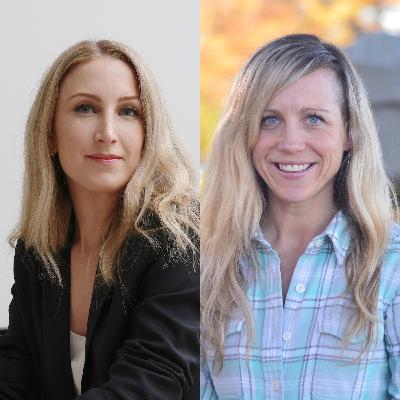


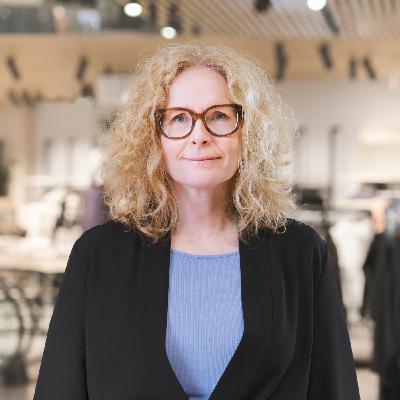



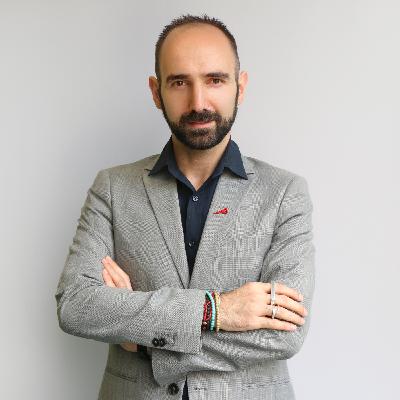

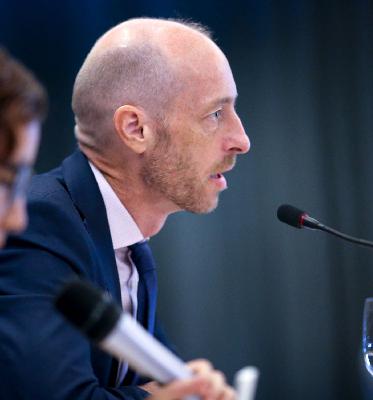
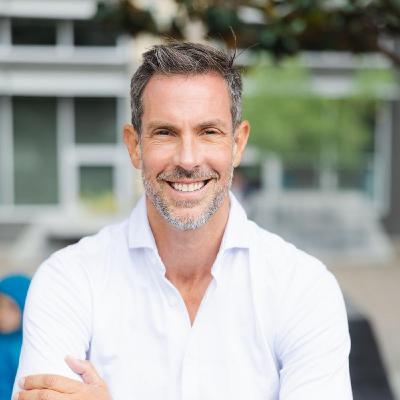



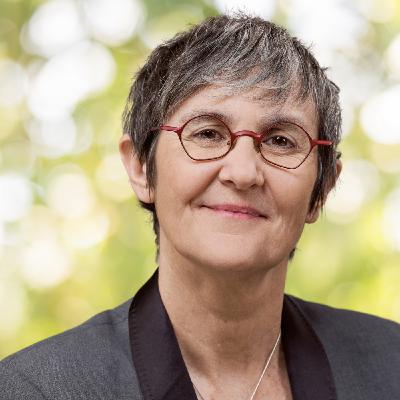

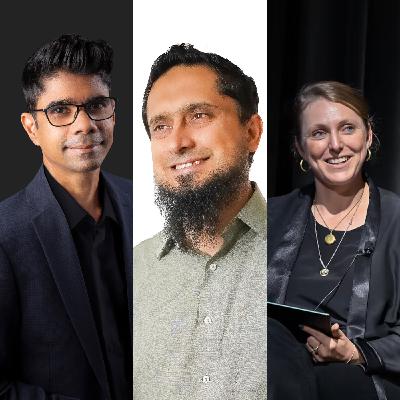
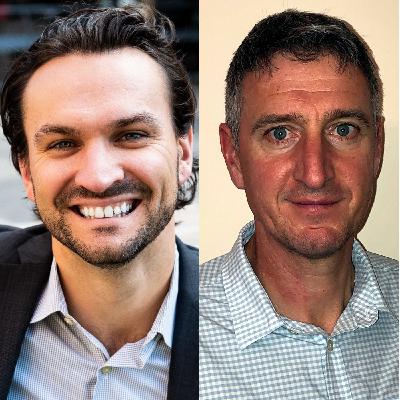





good
I couldn’t stop watching! I streamed it free online https://broken-silenze.com/